
The Mercedes-Benz E-Class is a range of executive cars manufactured by German automaker Mercedes-Benz in various engine and body configurations. Produced since 1953, the E-Class falls midrange in the Mercedes line-up, and has been marketed worldwide across five generations.
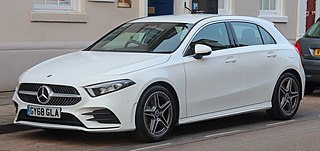
The Mercedes-Benz A-Class is a subcompact car produced by the German automobile manufacturer Mercedes-Benz as the brand's entry-level vehicle. The first generation was introduced in 1997, the second generation (W169) in late 2004 and the third generation (W176) in 2012. The fourth generation model (W177), which was launched in 2018, marked the first time the A-Class was offered in the United States and Canada. This fourth generation A-Class is also the first to be offered both as a hatchback (W177) and sedan (V177).

The Mercedes-Benz W211 is the third generation Mercedes-Benz E-Class made from 2002 to 2009 in sedan/saloon and station wagon/estate configurations – replacing the W210 E-Class models and superseded by the Mercedes-Benz W212 in 2009.

The Toyota Land Cruiser (J40), is a series of Land Cruisers made by Toyota from 1960 until 2001. Traditional body on frame, most 40 series Land Cruisers were built as 2-door models with slightly larger dimensions than the similar Jeep CJ.

The Mercedes-Benz Atego is a range of general-purpose rigid trucks introduced by Daimler Truck in 1998. A new model was introduced in 2004, followed by a facelift in 2010 and another new model in 2013. The latest version is available in gross vehicle weights of 6.5 to 16 tonnes (t) and is powered by a straight 4- or 6-cylinder engine.

The Mercedes-Benz Vaneo is a five-door, seven-seater compact MPV that was produced by Mercedes-Benz from 2002 to 2005. It used the automobile platform from the first generation Mercedes-Benz A-Class. Up to seven seater capacity was available, but this vehicle was not built as a van, instead it was built as a MPV. The name Vaneo is derived from the word Van, which is used in German for the car types MPV.
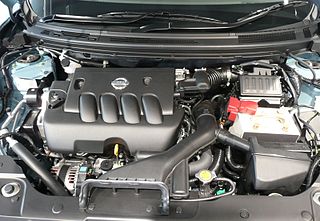
The Nissan MR engine family consists of straight-four 16-valve all-aluminium automobile engines with variable valve timing co-developed by Renault and Nissan. Renault calls it the M engine. Other noteworthy features of this engine family include acoustically equal runner lengths and a tumble control valve for the intake manifold, a "silent" timing chain, mirror finished crankshaft and camshaft journals, and offset cylinder placement in an attempt for increased efficiency.
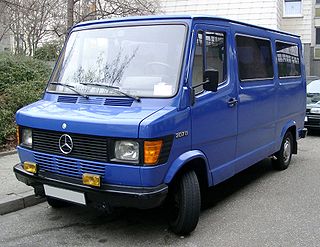
In 1977 Mercedes-Benz introduced a new van/truck, called T1 internally. Other designations were series TN / T1N and Bremer Transporter, since the vehicle was built in the Transporter-Plant in Bremen, Germany, first. In the years 1983/1984 production went - piece by piece - to the Transporter-Plant-Düsseldorf. The internal chassis-designations are: 601, 602 and 611.

The Mercedes-Benz 260 D, coded Mercedes-Benz W 138 according to internal works designation, was one of the first three diesel engined series produced passenger cars, together with 1933 Citroën Rosalie 11UD and the diesel version of the Hanomag Rekord. The 260 D was named in reference to its engine's cubic capacity. Nearly 2,000 vehicles were assembled until 1940, after which the Daimler-Benz group had to devote itself almost entirely to military manufacture.

The R-Type is a family of straight-4 turbocharged diesel engines developed by both Nissan and Renault, and also Daimler in regarding the R9M/OM626 engine. Released in 2011, it replaced the 1.9 dCi engine in Renault's range and the 2.0 dCi in the Nissan Qashqai, and in 2015, it also replaced the 2.0 dCi in the Renault Mégane as well. When launched, the engine produced 130 PS. Renault later introduced a higher-powered twin-turbocharged variant producing 160 PS.

The Mercedes-Benz Vito is a mid-sized light commercial vehicle (LCV) produced by Mercedes-Benz, available as a panel van, chassis cab, or multi-purpose vehicle (MPV), carrying cargo or up to eight passengers. In the Mercedes-Benz van lineup, it is positioned between the larger Sprinter and the smaller Citan.

Diesel engines began to be used in automobiles in the 1930s. Mainly used for commercial applications early on, they did not gain popularity for passenger travel until their development in Europe in the 1950s. After reaching a peak in popularity worldwide around 2015, in the aftermath of Dieselgate, the diesel car rapidly fell out of favor with consumers and regulators.

Mercedes-Benz W202 is the internal designation for a compact sedan/saloon manufactured and marketed by Mercedes-Benz 1993–2000, as the first generation of the C-Class, now in its fifth generation. Replacing the 190 series/W201 in June 1993, the C-Class sedan was Mercedes' entry-level model until 1997, when the company launched the A-Class. Production reached 1,847,382 over model years 1994–2000.

The Mercedes-Benz OM 654 is a family of inline-four cylinder automobile diesel engines introduced by Mercedes-Benz in 2016. This is one of the most powerful 2-liter inline-4 cylinder diesel engines with a single twin-scroll turbocharger.

The Mercedes-Benz X-Class (W470) is a luxury pickup truck that was sold by the German automaker Mercedes-Benz, a division of German multinational company Daimler AG. Unveiled at a world premiere in Cape Town, South Africa in July 2017, the pickup took its chassis from the Nissan Navara and employed many Mercedes-specific features and technologies, including some engines not shared with the Navara. It first went on sale in late 2017.

The Mercedes-Benz OM629 is a 4.0 litres (3,996 cc) diesel-fuelled, 4-stroke, compression-ignition internal combustion 75° 32-valve V8 engine used in the 2000s. It is the world’s first aluminium V8 diesel engine.

The OM656 is a turbocharged diesel engine produced by Mercedes-Benz since 2017. It was first introduced in the facelift W222 S-Class.

The OM613 is a turbocharged straight 6 diesel engine produced by Mercedes-Benz. It is the successor to the OM606 and was replaced by the OM648 engine in 2003.
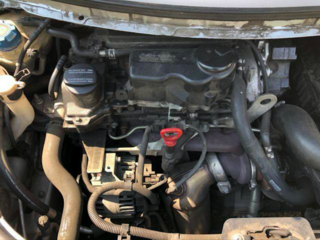
The OM639 is a turbocharged inline-three diesel engine produced by Mercedes-Benz, in collaboration with Mitsubishi Motors.
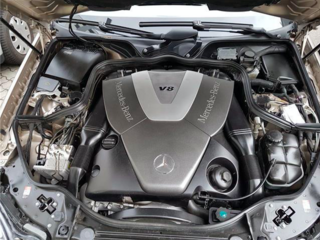
The Mercedes-Benz OM628 engine is a turbocharged V8 engine produced by Mercedes-Benz, from 1999 to 2005.



















